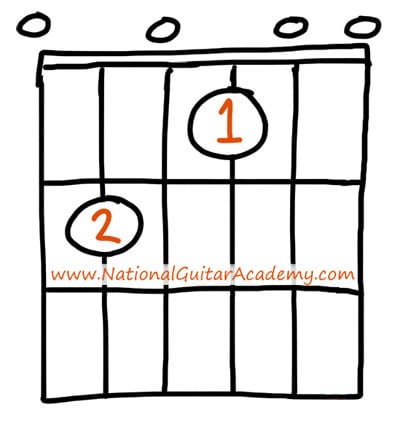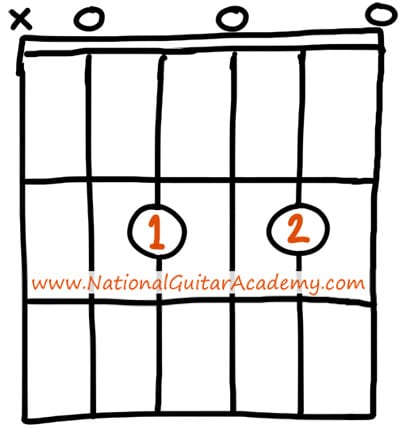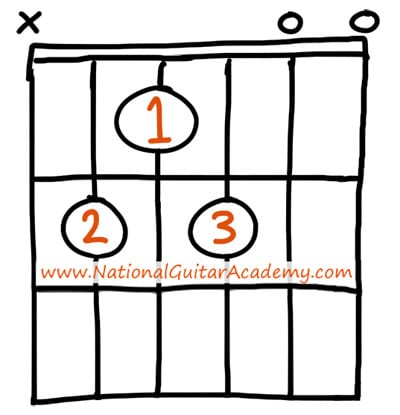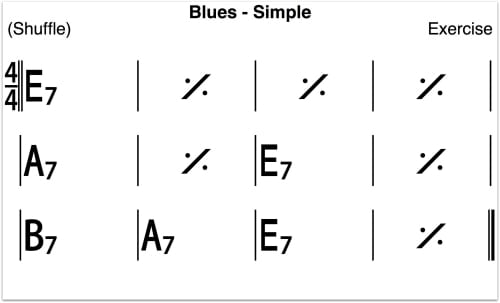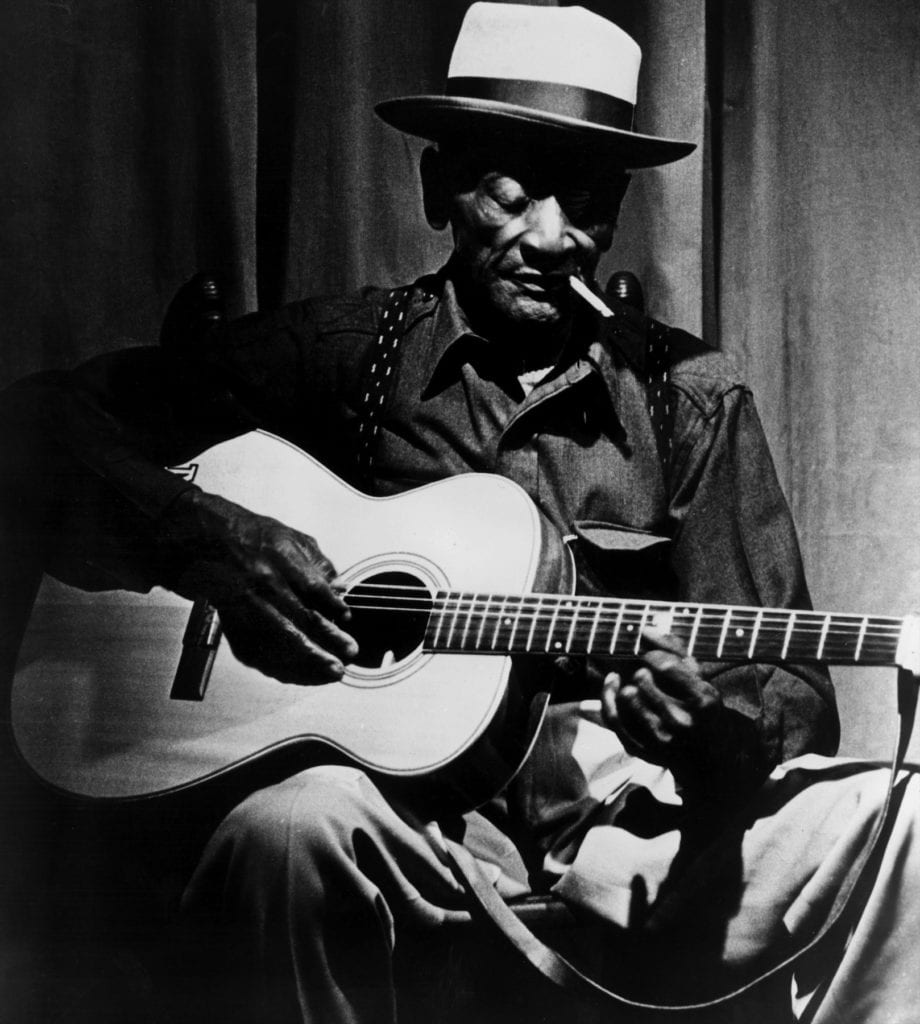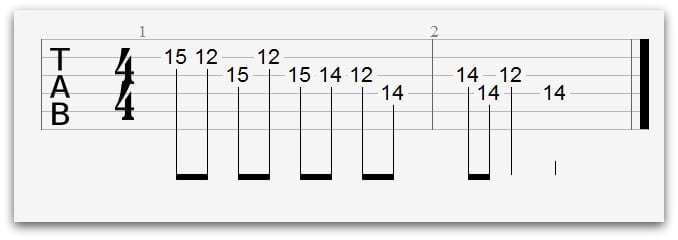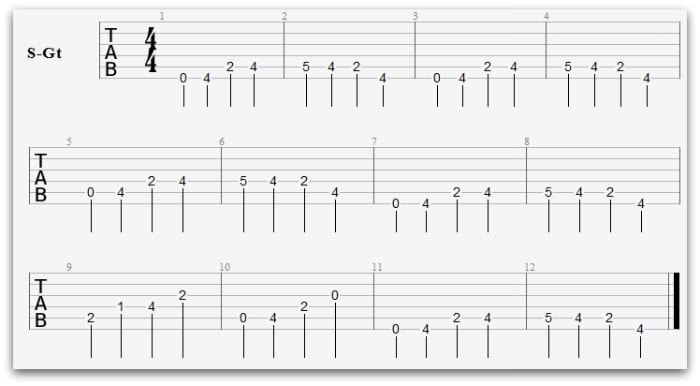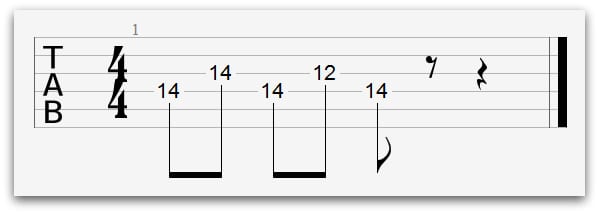Want to learn blues guitar? We’re going to show you everything you need to know to become a blues master!
In this free guitar lesson you will learn:
- 3 must know lead guitar licks that will make you sound amazing.
- 3 awesome sounding strumming patterns.
- The no1 secret to learning rhythm and lead guitar.
- 3 essential blues guitar riffs.
Over 100,000 guitar-learners get our world-class guitar tips & tutorials sent straight to their inbox:
Click here to join them
Get our best guitar tips & videos
What is blues music?
Blues music is one of THE most popular genres to learn on guitar. It’s fun, easy and sounds great.
The blues has been prominent in modern music since the 1930s and has a deep, soulful, rich sound,
Whether it’s a killer solo from the guitarist or a tight rhythm section working together; blues music has a great groove.
There’s a feeling you get from playing blues music that you don’t get from any other genre of music.
There are two main parts of blues music you should learn are:
- Rhythm guitar.
- Lead guitar.
Let’s dive in!
What Is Rhythm Guitar?
Rhythm guitarists play chords, rather than single note lines.
Although this role isn’t as fun as playing lead guitar, it’s SO important.
The job of a rhythm guitarist is to keep a solid groove.Without rhythm guitar, lead guitar would be nothing.
In blues guitar, we have specific chords which have a bluesy sound, these are known as ‘7’ chords.
Let’s learn some!
Blues Guitar For Beginners – 7 Chords
When learning blues guitar for beginners, you must learn 7 chords.
We’re going to learn 3 of the most popular ‘7’ chords.
Those chords are:
- E7
- A7
- B7
Let’s learn them.
The E7 Chord
- Place your 2nd finger on the 2nd fret of the A string. (5th string.)
- Place your 1st finger on the 1st fret of the G string. (3rd string.)
- Strum all the strings.
When playing this chord, make sure all those strings ring out. We want to hear every glorious note in this fantastic blues chord.
Want to learn other voicings of the E chord? Go here: 4 Easy Ways To Play The E Chord On Guitar
Learn 12 EASY beginner chords with our popular guide


Where should we send it?
✅ Stop struggling. Start making music.
✅ Learn beginner-friendly versions of every chord.
This is our most popular guide and it will improve your chord ability quickly! 😎
Get your own personalised guitar-learning plan 🎸
Get a custom guitar-learning plan here: Click here for GuitarMetrics™
World-Class Guitar Courses 🌎
Learn from the world's best guitar educators: Click here for our guitar courses
The A7 Chord
- Place your 1st finger on the 2nd fret of the D string. (4th string.)
- Place your 2nd finger on the 2nd fret o the B string. (2nd string.)
- Strum from the A string!
If you find this chord too hard, go here: 3 Easy Ways To Play The A Chord On Guitar
The B7 Chord
- Place your 2nd finger on the 2nd fret of the A string. (5th string.)
- Place your 1st finger on the 1st fret of the D string. (4th string.)
- Place your 3rd finger on the 3rd fret of the G string. (3rd string.)
- Strum from the A string!
Find this chord too diffuclt? Go here: B Guitar Chord – Tips For This Tough Chord
Why do we have to learn these specific chords?
All of these guitar chords are part of a common chord progression in blues music, that progression is the ’12 bar blues’.
The ‘E7’, ‘A7’ and ‘B7’ all belong to a 12 bar blues in the key of E.
It is possible to play a 12 bar blues in other keys.
However, for today’s lesson we’re going to be focusing on a 12 bar blues in the key of ‘E’.
To learn more about the key of E, go here: Chords In The Key Of E
Blues Guitar For Beginners – Essential Chord Progressions
The main progression in blues music is known as a ’12 bar blues’. You must know this chord progression if you want to learn blues music.
Hundreds of artists have used this progression, including John Mayer, B.B King and John Lee Hooker.
Learning The Progression
The reason it’s called a 12 bar blues, is because it features…you guessed it! 12 bars.
A bar is a segment in musical time, so when we play a 12 bar blues, we have 12 bars of music.
We’re going to be learning a 12 bar blues in the key of E.
Here’s the progression:
Can you see the bar lines? (The straight lines between each chord.)
If we count the spaces in between the bar lines, you can see that there’s 12 spaces.
Here’s what it sounds like:
Before you start playing this progression, it’s important that you listen to it and interalize it. Once you feel comfortable with what it sounds like, have a go at playing it.
You may have noticed that, this progression can repeat freely without getting boring. That’s one of THE best things about a 12 bar blues, it doesn’t need anything else. It’s perfect as it is!
Even though this chord progression sounds great, it needs some rhythm to give it character.
Let’s learn 3 essential strumming patterns that will make you sound amazing at blues guitar.
How To Play Blues Rhythm Guitar
Rhythm is an important part of learning blues guitar for beginners. It’s the glue which holds the band together.
There are 2 essential blues strumming patterns which we can learn.
Click play here to learn some epic strumming patterns.
You can apply both of these strumming patterns to a 12 bar blues progression.
Another essential part of blues guitar is playing lead. Let’s learn how to play some burnin’ blues lead guitar.
What is lead guitar?
A lead guitarist usually plays single note lines which accompany what the rest of the band is doing.
This could be a guitar solo, an awesome guitar riff or a mesmerizing guitar lick. This is one of the best parts of learning blues guitar for beginners.
What does a blues lead guitarist do?
In blues music, a lead guitarist will often take ripping solos. However, the blues guitarist doesn’t just take solos. Often they will play extra riffs and licks which add character to a blues song.
Wondering who the top 30 blues guitarists are? Check out this article by Music Radar to find out: The 30 greatest blues guitarists of all time
What’s the difference between a solo and a riff?
A solo is the key moment in a song, where a guitarist gets to rip out some of their favourite licks. The solo is a key moment for any musician, this is the time when they get to shine!
Here’s a great example of a blues solo:
Guitar riffs have more of a back seat role. Riffs are used to add character and embellishments to the song.
Here’s a great example of a blues riff:
The opening riff to this song by ‘The Bros. Landreth, is killer! If you want to learn to play like these blues greats, you must learn guitar scales.
Essential Blues Guitar For Beginners – Guitar Scales
The two most common scales in blues are:
- The blues scale.
- The minor pentatonic scale.
To keep things simple, we’re going to learn both of these scale in the key of E.
The Blues Scale
To play this scale in the key of E, start it on the 12th fret of the low E string.
Here’s the scale shape:
It should sound like this:
Moveable Shapes
Remember that, scale shapes are transferable.
This means that this shape can be played anywhere across the fret board. All you have to do is change your root note on the low E string.
Here are ALL of the root notes on the low E string:
To do this:
Change the starting note of this scale.
For example, to play this scale in the key of A, all you have to do is start this scale on the 5th fret.
Here’s what it would look like on a tab:
Download our lead guitar cheat-sheet to make things easier
It's hard to understand which scales work with which keys.
So we created a cheat-sheet! A key and scale-finder that you can use again and again.
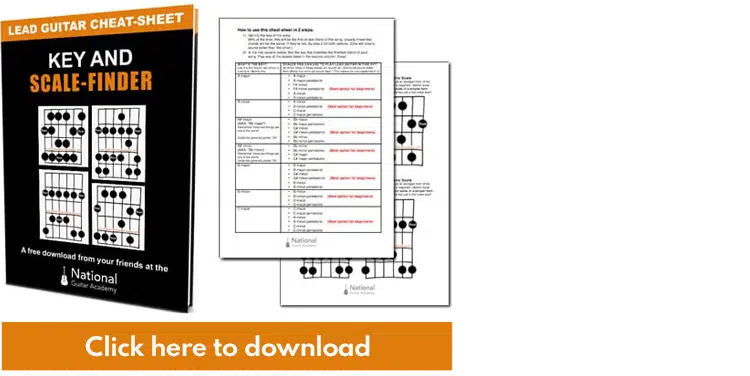
Get your personalised guitar-learning plan 🎸
Get a custom guitar-learning plan here: Click here for GuitarMetrics™
World-Class Guitar Courses 🌎
Learn from the world's best guitar educators: Click here for our guitar courses
Essential Blues Guitar For Beginners – The Minor Pentatonic Scale
Here’s the chord box for this scale. To play this scale in the key of E, start it on the 12th fret.
This scale isn’t just used in blues, it can also be heard in rock, metal and even jazz.
Why is it important to know scales?
When learning blues guitar for beginners, it’s important that we learn scales. Scales tell us what notes we can and can’t play!
If a song is in a specific key, we can play a scale which also works in that key.
For example, if we’re playing a blues progression in the key of E, we can use the following scales:
- E blues scale.
- E minor pentatonic.
All of the notes in these scales work over a E blues chord progression. Don’t worry too much about why this works, just accept that it does.
If you’re new to blues guitar, it’s FAR more important that you get playing first, rather than get bogged down by music theory.
Now we’ve learnt a bit about what scales we can play over a blues progression, let’s learn some killer blues guitar riffs which use these scales.
To learn more scales, go here: Learn Guitar Scales In 8 Easy Steps
Essential Blues Guitar For Beginners – Blues Lick #1
This guitar riff sounds fantastic and is perfect if you want to devleop your picking skills.
To learn how to pick fast, go here: How To Alternate Pick With Speed And Precision
This lick is based around the blues scale.
Here’s the tab:
Here’s what it sounds like:
Once you’ve perfected this lick, try and use it in a musical situation. It would perfectly over this backing track:
Essential Blues Guitar For Beginners – Blues Riff #2
Here’s a classic 12 bar blues riff. This would sound great played on bass or guitar. In the music world we refer to this as ‘walking bass line’.
Here’s what it sounds like:
Essential Blues Guitar For Beginners – Blues Riff #3
This riff would sound killer, in either a solo or as a separate riff to a blues chord progression.
You don’t have to play this riff in the E minor pentatonic position, you can move it around the fret board as the chords change in a 12 bar blues.
To play this riff in the key of E, start it on the 14th fret.
Then, when the chord changes to an A7, we would start our lick on the 7th fret.
Like this:
Then for the B7, we start our lick on the 9th fret.
Like this:
Here’s what they sound like all over a 12 bar blues:
What Type of Guitarist Are You?
Take our 60-second quiz & get your results: Take The Quiz
Join the world's best online guitar school 🌎
- Get your own personalised guitar learning plan (customised just for YOU).
- World-class online guitar courses. Learn at your own pace.
- Community Campus & Learning Forum - A friendly community! Connect with our team & students. 😊
- Beginner Song library with chordsheets, tabs and tips. (Songs suitable for all levels!)
- Regular live streams, seminars and Q&A sessions - Learn from world-class guitar educators. Get all your questions answered!
Click here to learn more about National Guitar Academy membership 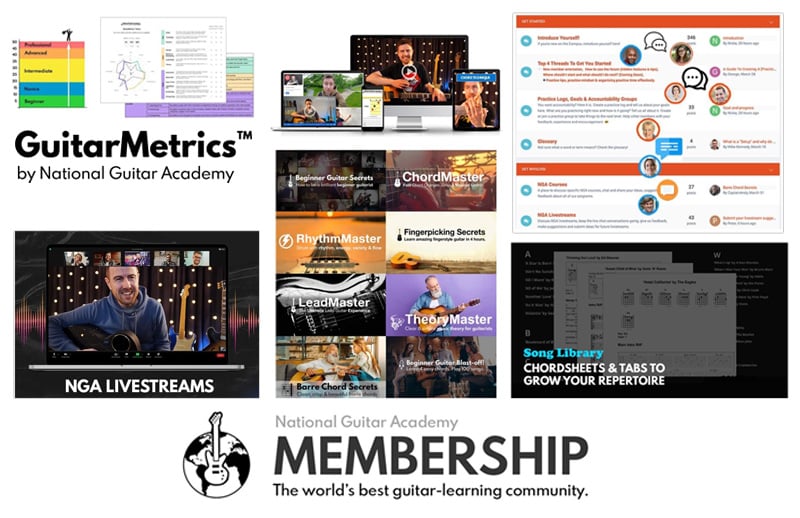
Cool Guitar T-shirts 😎
Look cooler! Check out our merch: Click here to see our merch store
Want free guitar tips and video lessons delivered to your inbox?
Join over 100,000 guitar-learners and subscribe to our guitar-tips-by-email service. (It's free.)
We'll send you a series of lessons that will move you to the next level of your guitar journey.
Learn how everything fits together quickly, easily and effectively. We share ninja tips (for instant fun!) but also timeless fundamentals that will deepen your understanding.


Get our best guitar tips & videos
Popular Lessons
How To Learn Guitar: An 11-Step Programme For Beginners
How To Choose The Perfect Beginner Guitar
More Cool Guitar Stuff
Learn about National Guitar Academy: About Us
Join us on Facebook for daily guitar tips.
Listen to our Learn Guitar Podcast for rapid guitar progress.
Check out our free chord lessons.



